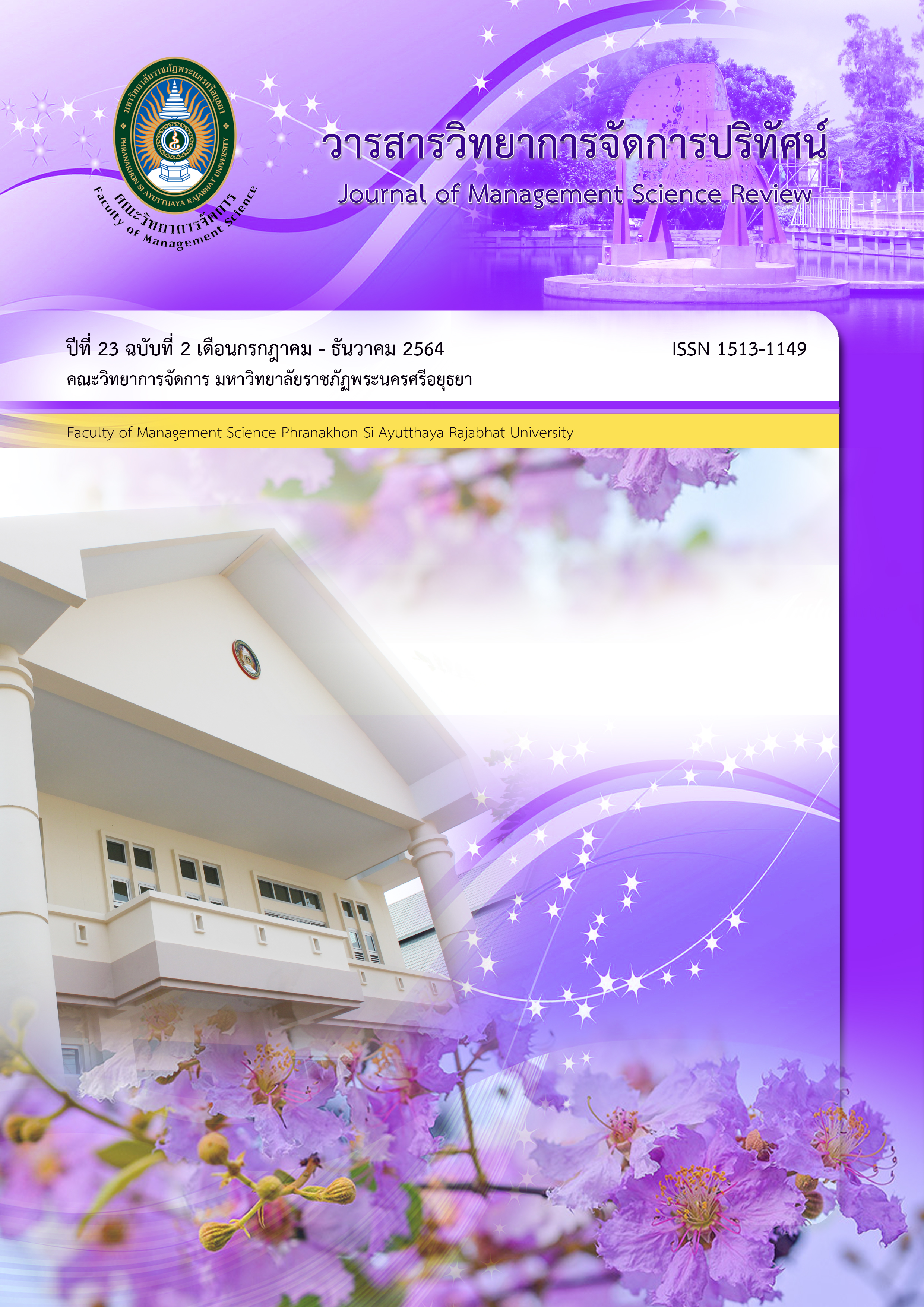The Development Policy of Phra Nakhon Si Ayutthaya Province Being to the Collection and Distribution Center in the Upper Part of the Country by Water Transportation to Link to International Trade.
Keywords:
Development Policy, Collection and Distribution Center, Water TransportationAbstract
Thailand and other countries have received an economic impact from the pandemic of Corona Virus 2019 since 2020. In 2021, Thailand has been recovered and showed economic growth continuously through import and export with major economic partners resulting in domestic transport having played an important role in supporting international trade. Current logistics cost is 13.4% against GDP with more than 50% coming from transport cost and it should plan for restructuring appropriate transport to decrease tangible transport cost by increasing proportion of marine transport which has the lowest cost. The strategic area to be collecting and distributing center between the upper part of Thailand and ocean exit is Ayutthaya province while the government policy on infrastructure development is very less by compared with other transport modes and this has been confirmed by the opinion surveys for expectation index of transport operators with low score led to the inefficiency of operation and logistics cost. Government should consider engaging transport operators for development plans; especially, the amendment on the town planning to allow more construction of environmentally friendly river ports and the dredging projects which provide the sufficient depth as required for the inland waterway transport operators in cargo carriage. These would raise up the role of Phra Nakhon Si Ayutthaya Province to be the linkage center of gathering and distributing goods in the upper part of the country to the international world market as its natural location potential.
References
Baird, A. (2007). The Economics of Motorways of the Sea. Maritime Policy & Management, 34(4), 287-310.
Beskfvnick, B. (2006. Importance of Short Sea Shipping and Sea Motorways in the European and Slovenian Transport policy Pomorstvo. European transport policy, 20(1), 23-35.
Brooks, M. R., Hodgson, J. R. F. and Fros, J. D. (2006). Short Sea Shipping on the East Coast of North America : An Analysis of Opportunities and Issues. Canada: Dalhousie University.
Brooks, M.R., and Frost, J. D. (2004). Short sea shipping: a Canadian perspective. Maritime Policy & Management, 31(4), 393-407.
Cochrane, K., Saxe, S., Roorda, M. J. and Shalaby, A. (2017). Moving freight on public transit: Best practices, challenges, and opportunities. International Journal of Sustainable Transportation, 11(2), 120-132.
Goulielmos, A. M., Lun, V. Y-H. and Lai, K-H. (2012). Maritime Logistics in EU Green Ports and Short Sea Shipping. In Maritime Logistics (pp. 245-262).
Islam, D. M. Z., Dinwoodie, J. and Roe, M. (2006). Promoting Development through Multimodal Freight Transport in Bangladesh. Transport Reviews, 26(5), 571-591.
López-Navarro, M., Moliner, Á. María Rodríguez, R. and Sánchez-García, J. (2011). Accompanied versus Unaccompanied Transport in Short Sea Shipping between Spain and Italy: An Analysis from Transport Road Firms Perspective. Transport Reviews, 31(4), 425-444.
Morales-Fusco, P., Saurí, S. and Lago, A. (2012). Potential freight distribution improvements using motorways of the sea. Journal of Transport Geography, 24, 1-11.
Office of the Permanent Secretary. (2015). The Annual Report. Thailand: Ministry of Transport.
Office of Transport and Traffic Policy and Planning, (2013). The study on Transport and Traffic Development Master Plan. Thailand: Ministry of Transport.
Parasuraman, A. Ziethaml, V. and Berry, L.L., (1988). SERVQUAL: A Multiple- Item Scale for Measuring Consumer Perceptions of Service Quality. Journal of Retailing, 62(1), 12-40.
Perakis, A. N. and Denisis, A. (2008). A survey of short sea shipping and its prospects in the USA. Maritime Policy & Management, 35(6), pp. 591-614.
Saldanha, J. and Gray, R. (2002). The potential for British coastal shipping in a multimodal chain. Maritime Policy & Management, 29(1), 77-92.
Suárez-Alemán, A. and Hernández, A. (2014). Incentives to reduce port inefficiency: a theoretical approach. Maritime Policy & Management, 41(5), 462-479.
Supoj Chawawiwat. (2018). The Hidden Problem to the Government Policy on Promoting the Inland Shipping in Thailand. Eurasian Journal of Business and Management., 6(4), 27-34.
Tzannatos, E. And Nikitakos, N. (2013). Natural gas as a fuel alternative for sustainable domestic passenger shipping in Greece. International Journal of Sustainable Energy, 32(6), 724-734.
Woodburn, A. (2007). The role for rail in port-based container freight flows in Britain. Maritime Policy & Management, 34(4), 311-330.
Yang, C-C., Tai, H-H and Chiu, W-H. (2014). Factors influencing container carriers’ use of coastal shipping. Maritime Policy & Management, 41(2), 192-208.




